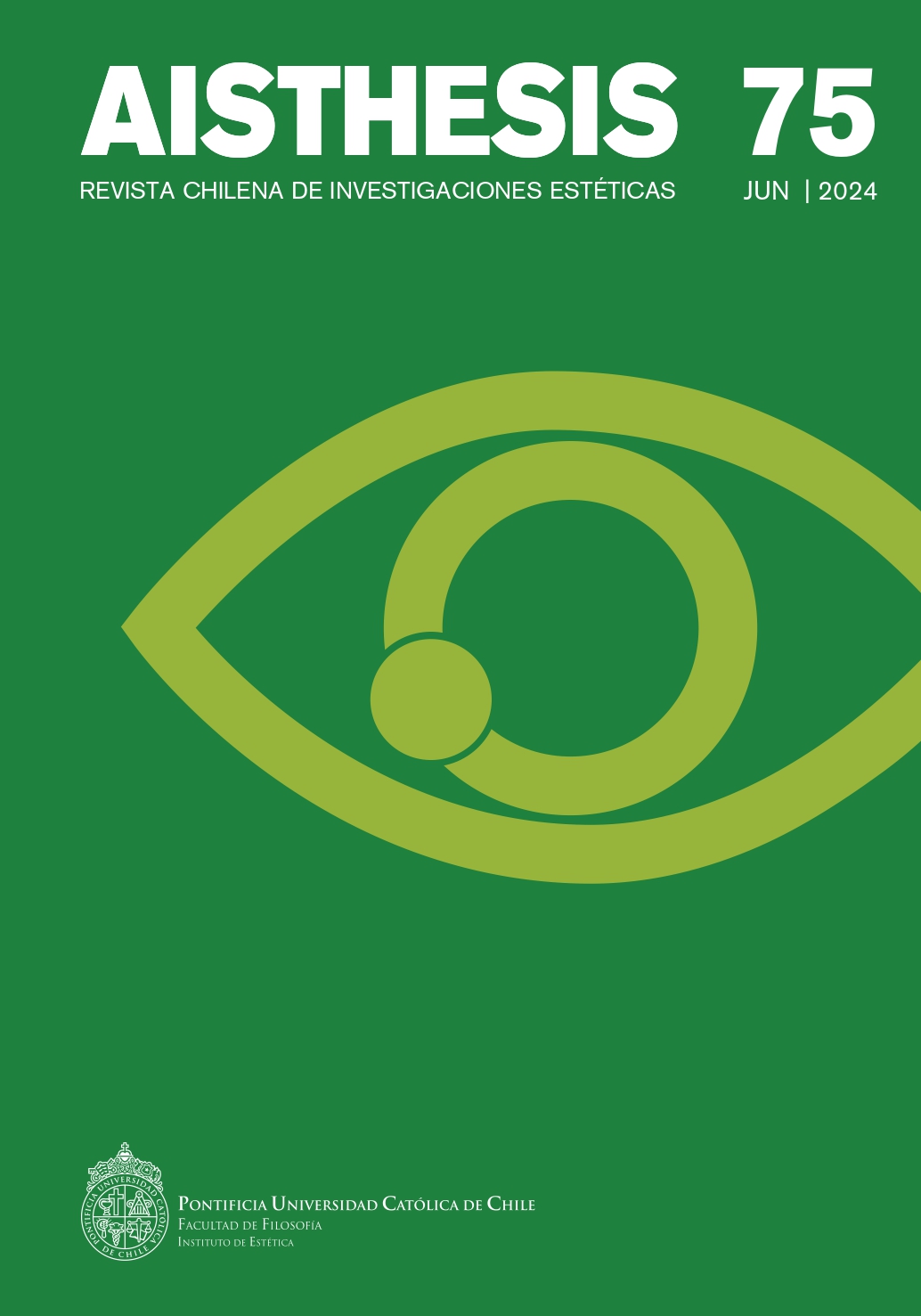Portraits in the Photography of Lariza Hatrick The Abject as a Radical Stumbling Block to Representation
Main Article Content
Abstract
This article is interested in photographic portraits. To do this, the visual proposal of Lariza Hatrick -an argentine lesbian artist dedicated to portraying the sex-dissident community that she herself inhabits- is considered. Interesting here is the way in which her portraits account for the apparition of bodies as an ontological place of political contestation not reducible to the level of meaning. In this direction, some links between identity and representation are explored based on the pioneering work of Michel Foucault, the queer gaze of Judith Butler, and the well-known photographs of Cindy Sherman. Finally, a counterpoint is made between, on the one hand, these theoretical and aesthetic approaches, and, on the other hand, the ontological register that nests in Hatrick's photographs – here pondered as support where the abject reverberates, that is, a radical otherness that circulates in corporeal materiality that goes beyond any normative framework.
Downloads
Article Details

This work is licensed under a Creative Commons Attribution-NonCommercial-ShareAlike 4.0 International License.
All contents of this electronic edition are distributed under the Creative Commons license of "Attribución-shareAlike 4.0 Internacional" (CC-BY-SA). Any total or partial reproduction of the material must mention its origin.
The rights of academic works published in this publication belong to their authors., who grant to AISTHESIS: Revista Chilena de Investigaciones Estéticas the license for its use. The management of the permits and the authorization of the publication of the images (or of any material) that contains copyright and its consequent rights of reproduction in this publication is the sole responsibility of the authors of the articles
References
Referencias
Awret, Uziel. «Las Meninas and the Search for Self-Representation». Journal of Consciousness Studies, vol. 15, nº 9, 2008, pp. 7-34.
Barad, Karen. «Posthumanist Performativity: Toward an Understanding of How Matter Comes to Matter». Signs, vol. 28, nº 3, 2003, pp. 801-831.
Benjamin, Jessica. Sujetos iguales, objetos de amor. Ensayos sobre el reconocimiento y la diferencia sexual. Paidós, 1997.
Berenstein, Isidoro. «El vínculo y el otro». Psicoanálisis APdeBA, vol. XXIII, nº 1, 2001, pp. 9-21.
Braidotti, Rosi. Nomadic Subjects: Embodiment and Sexual Difference in Contemporary Feminist Theory. Columbia University Press, 1994.
Butler, Judith. Mecanismos psíquicos del poder. Teorías sobre la sujeción. Cátedra, 2001.
––. El género en disputa. El feminismo y la subversión de la identidad. Paidós, 2007.
––. Cuerpos que importan. Sobre los límites materiales y discursivos del «sexo». Paidós, 2008.
Carver, Charles y Michael Scheier. Attention and Self-Regulation. Springer, 1981.
Copjec, Joan. Imaginemos que la mujer no existe. Fondo de Cultura Económica, 2006.
Crimp, Douglas. «Pictures». October, vol. 8, 1979, pp. 75-88.
De Lauretis, Teresa. Freud’s Drive: Psychoanalysis, Literature and Film. Palgrave Macmillan, 2008.
Edelman, Lee. No Future: Queer Theory and the Death Drive. Duke University Press, 2004
Foucault, Michel. Las palabras y las cosas. Siglo XXI, 1968.
––. Vigilar y castigar: nacimiento de la prisión. Siglo XXI, 2002.
––. La voluntad de saber. Historia de la sexualidad. Vol. 1. Siglo XXI, 2008.
Gergen, Kenneth. «The Social Constructionist Movement in Psychology». American Psychologist, vol. 40, nº 3, 1985, pp. 266-275.
Goffman, Erving. La presentación de la persona en la vida cotidiana. Amorrortu, 2012.
Gugleta, Zdravka. «Michel Foucault’s (Mis)Interpretation of Las Meninas. Or, Pure Representation as the Tautologous Structure of the Sign». Facta Universitatis, vol. 9, nº 1, 2011, pp. 1-12.
Halberstam, Jack. El arte queer del fracaso. Egales, 2018.
Irigaray, Luce. Espéculo de la otra mujer. Akal, 2007.
Kellett, Heidi. «“Skin Portraiture” in the Age of Bio Art: Bodily Boundaries, Technology and Difference in Contemporary Visual Culture». Body & Society, vol. 24, nº 1-2, 2018, pp. 137-165.
Kérchy, Anna. «The Woman 69 Times: Cindy Sherman’s “Untitled Film Stills”». Hungarian Journal of English and American Studies, vol. 9, nº 1, 2003, pp. 181-189.
Kristeva, Julia. Poderes de la perversión. Catálogos, 1988.
Lorey, Isabell. Disputas sobre el sujeto. Consecuencias teóricas y políticas de un modelo de poder jurídico: Judith Butler. La Cebra, 2017.
Martínez, Ariel. «Hacia una cartografía erógena y política del cuerpo: aportes del psicoanálisis para un análisis queer antisocial del itinerario fotográfico de Lariza Hatrick». Chasqui: Revista de Literatura Latinoamericana, vol. XLIX, nº 1, 2020, pp. 31-52.
Meagher, Michelle. «Improvisation within a Scene of Constraint: Cindy Sherman’s Serial Self-Portraiture». Body & Society, vol. 13, nº 4, 2007, pp. 1-19.
Owens, Craig. Beyond Recognition: Representation, Power, and Culture. University of California Press, 1992.
Silverman, Kaja. The Threshold of the Visible World. Routledge, 1996.
––. The Miracle of Analogy, or The History of Photography, Part I. Stanford University Press, 2015.
Stryker, Susan. «(De)Subjugated Knowledges. An Introduction to Transgender Studies». The Transgender Studies Reader, eds. Susan Stryker y Stephen Whittle. Routledge, 2006, pp. 1-17.
West, Shearer. Portraiture. Oxford University Press, 2004
Wilson, Dawn. «Facing the Camera: Self-Portraits of Photographers as Artists». The Journal of Aesthetics and Art Criticism, vol. 70, nº 1, 2012, pp. 55-66.
Yardley, Krysia y Terry Honess. Self and Identity: Psychosocial Processes. Wiley, 1987.
